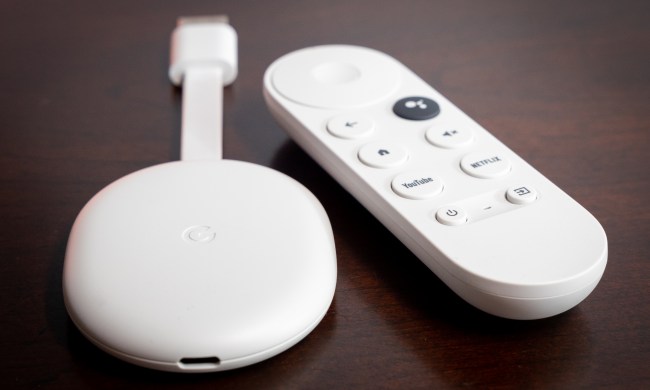Let’s talk, for a minute, about the recent headlines about Google TV getting “free TV channels.”
First, the context. The following is from a report in Protocol from longtime industry journalist Janko Rottgers:
Google is looking to make its Chromecast streaming device more appealing to cord-cutters. The company has plans to add free TV channels to Google TV, the Android-based smart TV platform that powers Chromecast, as well as select smart TVs from companies including Sony and TCL, Protocol has learned.
To achieve this, Google has held talks with companies distributing so-called FAST (free, ad-supported streaming television) channels, according to multiple industry insiders. These channels have the look and feel of traditional linear TV networks, complete with ad breaks and on-screen graphics. Free streaming channels could launch on Google TV as early as this fall, but the company may also wait to announce the initiative in conjunction with its smart TV partners in early 2022.
There’s news in there, for sure. Just maybe not quite in the way some outlets are writing it.

Not new at all
Google TV — or more specifically in this case, Chromecast with Google TV, the not-quite-a-replacement for Android TV (or at least not yet, anyway) — already has access to any number of “free television channels.” Never mind that “television channels” doesn’t really mean anything anymore. The context here (and as it originates in the Protocol piece) almost certainly means what in the industry are known as AVOD services, or advertising-based video-on-demand services. They’re also referenced as “FAST” channels here — exactly the same thing.
Such channels — and the apps they come with — are not new at all. They’re not new to Google, or Android, or even Apple TV or Amazon Fire TV.
The important takeaway here is that, according to Protocol’s “industry insiders,” Google apparently is in talks to put them front and center in the Google TV operating system. Any time you put anything at the top of an OS, it’s a big deal. And this very much sounds like you wouldn’t have to manually download the app first. Or, perhaps, an OS update will automatically install the app, which would then give the OS free reign to promote whatever it wants from within the app.
(That last part isn’t novel, either. Android TV long has had the ability to highlight individual movies or shows from an app on the home screen, and there’s no real reason that the operating system couldn’t extend that function to full “channels,” too.)
Inside baseball
Really what we’re talking about here is inside baseball within the industry. It’s important to note that those “free channels” aren’t young upstarts. Tubi is owned by Fox. Pluto is owned by ViacomCBS. IMDb TV is owned by Amazon. Should Google promote one or more of them in the Google TV home screen (which, by the way, also has ad slots) on Chromecast or a third-party TV that uses Google TV as the operating system, it almost certainly will come with a fair amount of money changing hands. And there’s absolutely nothing wrong with that. It’s how things work, not unlike how Google is the featured search provider in iOS.
It’s also exactly what Amazon Fire TV is doing with IMDb TV, and what you’re seeing other manufacturers do on their platforms. More free content equals more time in the built-in Samsung operating system. Or in LG’s. It’s also exactly what Roku does with The Roku Channel, which itself aggregates dozens and dozens of ad-supported “channels.”
What we have here is a business story, is all. It’s almost certainly not any sort of newfangled capability. If and when it comes to pass, you probably won’t be getting something that you don’t already have access to.
It’ll just be more in your face, whether you want it or not.



